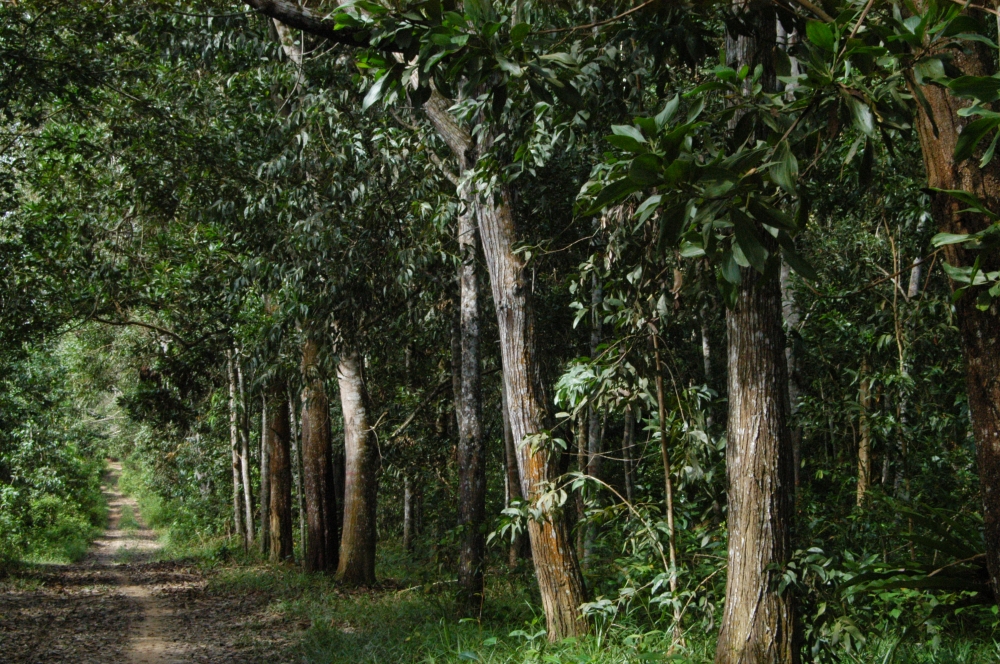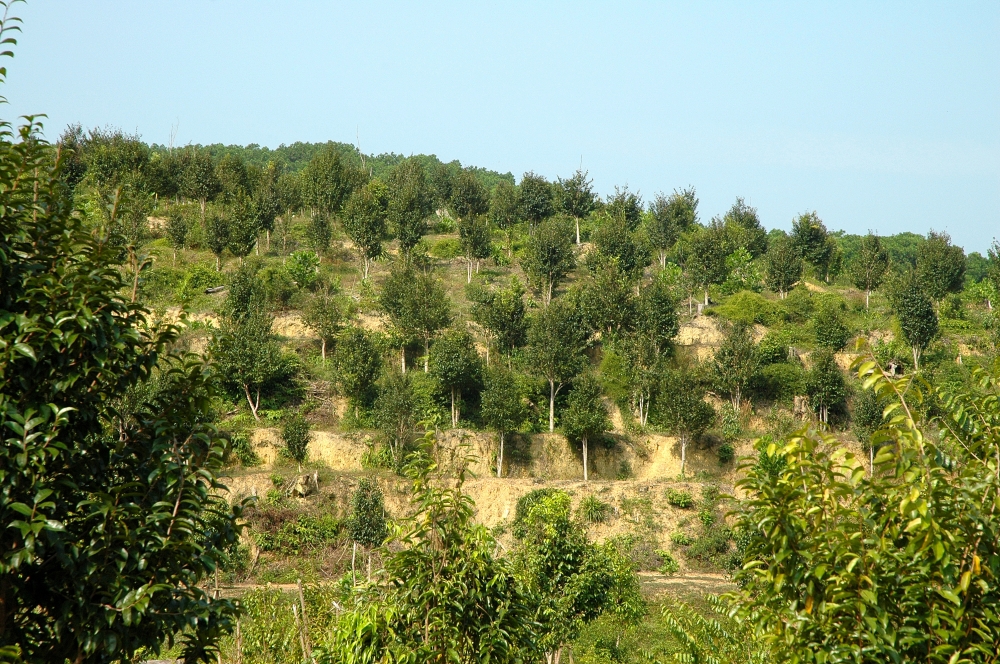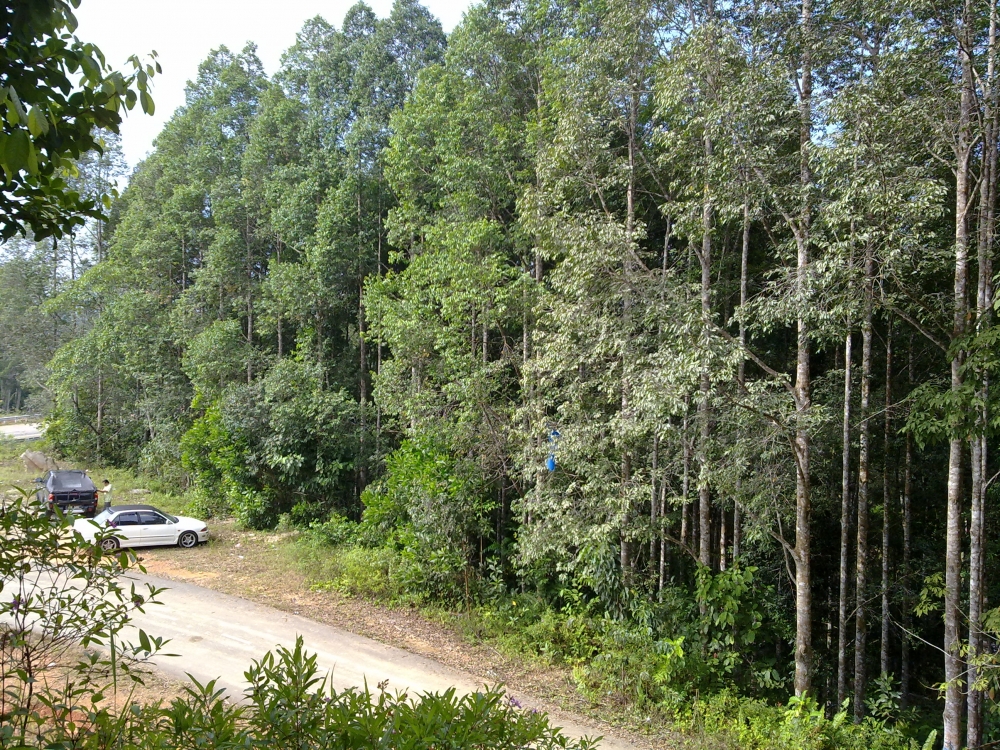
Agronomic Practices And Maintenance In Forest Plantation
The main factor that determines the success of a forest plantation is good agronomic management. The young farmed tree is about five and a half years, with it having one or two leaf graft stumps in polybags. The growth of the young tree can be enhanced through the prudent management of agronomic inputs. Several key agronomic practices are needed to ensure healthy tree growth to achieve tappable girth in a shorter time. It includes ground cover management and weed control in areas between tree lanes, soil moisture conservation, adequate and orderly fertilization, disease and pest control, and gardening practices such as controlled pruning. Among these practices, the emphasis should be on essential practices that influence most of its growth and productivity, such as planting and maintenance of ground cover legumes, soil conservation, and fertilization.
a) Planting and Maintenance of Ground Cover Legumes
In all new planting and replanting areas, it is recommended that pure ground cover legumes are planted and maintained between tree lanes except in hilly areas where it is not possible to implement. There are several benefits from the maintenance of the earth cover in the lanes between the tree lanes.
i) Restores nutrients and increases soil fertility.
Legume-type earth cover is preferred over native earth cover because legumes enrich the ecosystem by injecting atmospheric nitrogen (N) bonds into the soil-tree system. In addition to adding nitrogen, three other nutrients, namely phosphorus (P), potassium (K), and magnesium (Mg), are also recycled in large amounts.
ii) Reduce soil erosion and surface runoff
Cultivation of any crops involves soil clearing and soil restoration. These destructive practices increase surface runoff and soil erosion when the soil surface is left uncovered. The use of legumes as ground cover improves the soil structure and increases soil aggregation, enhancing soil porosity, permeability, and the overall physical fertility of the soil.
iii) Promotes root absorbent activities
The effect of restoring nutrients and organic matter indirectly affects the growth of root absorbent activity. The growth of absorbent roots almost doubles with the planting of ground cover legumes compared to grass and stump membranes. In addition, young trees are less likely to be infected with root diseases if the lanes between the tree rows are planted with legumes compared to non-legume plants. Studies conducted showed that the total number of trees infected with root disease in legume plots is 26 and 29 trees per hectare compared to grass plots of 41 and 45 trees per hectare (Pushparajah & Mahmud, 1977).
Cultivation and Care Procedures
Bean seeds that have been sown at a rate of 3.3 to 5.5 kg per hectare and mixed with the same amount of phosphate dust are planted along the terrace lips during the rainy season. Before sowing the seeds, the soil must be treated with adequate Rhizobium culture to ensure better granulation and nitrogen binding. Usually, two or three strips of seeds are sown along each area between the lanes in hilly or steep areas. In areas where cultivation of pure ground cover legumes is difficult, sowing of seeds is done in patches along the planting terrace. Prophylactic control of pests and diseases in legume cover areas is necessary. Selective weed control in legume cover areas must be done to obtain perfect ground cover from legume types (Sivanadyan, 1991).
i) Restores nutrients and increases soil fertility.
Legume-type earth cover is preferred over native earth cover because legumes enrich the ecosystem by injecting atmospheric nitrogen (N) bonds into the soil-tree system. In addition to adding nitrogen, three other nutrients, namely phosphorus (P), potassium (K), and magnesium (Mg), are also recycled in large amounts.
ii) Reduce soil erosion and surface runoff
Cultivation of any crops involves soil clearing and soil restoration. These destructive practices increase surface runoff and soil erosion when the soil surface is left uncovered. The use of legumes as ground cover improves the soil structure and increases soil aggregation, enhancing soil porosity, permeability, and the overall physical fertility of the soil.
iii) Promotes root absorbent activities
The effect of restoring nutrients and organic matter indirectly affects the growth of root absorbent activity. The growth of absorbent roots almost doubles with the planting of ground cover legumes compared to grass and stump membranes. In addition, young trees are less likely to be infected with root diseases if the lanes between the tree rows are planted with legumes compared to non-legume plants. Studies conducted showed that the total number of trees infected with root disease in legume plots is 26 and 29 trees per hectare compared to grass plots of 41 and 45 trees per hectare (Pushparajah & Mahmud, 1977).
Cultivation and Care Procedures
Bean seeds that have been sown at a rate of 3.3 to 5.5 kg per hectare and mixed with the same amount of phosphate dust are planted along the terrace lips during the rainy season. Before sowing the seeds, the soil must be treated with adequate Rhizobium culture to ensure better granulation and nitrogen binding. Usually, two or three strips of seeds are sown along each area between the lanes in hilly or steep areas. In areas where cultivation of pure ground cover legumes is difficult, sowing of seeds is done in patches along the planting terrace. Prophylactic control of pests and diseases in legume cover areas is necessary. Selective weed control in legume cover areas must be done to obtain perfect ground cover from legume types (Sivanadyan, 1991).
b) Soil Conservation
Good soil will produce satisfactory agricultural yields. The land must be properly managed, and soil organisms' activities will increase. This will be more beneficial and leave a long-lasting effect. A good fertilization practice will accelerate tree growth and canopy formation between the trees (the trees meet). The formation of tree canopies provides shade that reduces weed growth and the cost of controlling it.
Weeding
In an established farm, most weeds consist of trees (shrubs) and ferns, but weeds of grass and rusiga are less likely to grow there. The frequency of poisoning is high in the early stages of cultivation and decreases as the tree matures. The frequency of weeding is reduced substantially when trees form a dense canopy, providing shade and slowing down the growth of weeds. Besides that, the frequency of weeding is also influenced by the frequency of rainfall, the weed control methods adopted, and the type of herbicide used.
Weeding
In an established farm, most weeds consist of trees (shrubs) and ferns, but weeds of grass and rusiga are less likely to grow there. The frequency of poisoning is high in the early stages of cultivation and decreases as the tree matures. The frequency of weeding is reduced substantially when trees form a dense canopy, providing shade and slowing down the growth of weeds. Besides that, the frequency of weeding is also influenced by the frequency of rainfall, the weed control methods adopted, and the type of herbicide used.
c) Fertilization
Signs of Nutrient Deficiency
Some of the signs to observe on nutrient deficient plants are as listed below:
Nitrogen: The leaves look yellowish overall. The color change begins in the old leaves and spreads to the younger leaves.
Potassium: The edges of the leaves are yellowish or orange. On this young tree of yellow or orange color, there are spots that are then spread widely.
Magnesium: The middle and crevices of the leaves turn yellow. The veins of the leaves are still green and look like the shape of a fishbone "Herring Bone"
Nutrient Sources (Fertilizers)
Some of the nutrient sources are as listed below:
Nitrogen: Urea, Ammonium sulfate.
Phosphorus: Christmas Island Rock Phosphate (CIRP).
Potassium: Muriate of Potash.
Magnesium: Kieserite.
Calcium: Ground Limestone, Lime.
Timing to fertilize mature trees and areas that need it.
The period of nitrogen uptake by trees with the most active rate is between re-leafing up to the next 5 months. The rate of nutrient uptake is directly related to the production of new leaves. Therefore, if leaf rotting occurs in February, high levels of nitrogen uptake occur between January to July. After that, the rate of nutrient absorption will decrease. If secondary stimulation and second replanting occur, then fertilization with a greater amount of fertilizer is required.
To conclude, forest plantations can be considered as one of the great forms of investment. So, to get the most profit from this investment, proper farm management should be done in an orderly manner. The selection of appropriate practices and maintenance is critical to ensure success from the earliest stages of the farm establishment.
Some of the signs to observe on nutrient deficient plants are as listed below:
Nitrogen: The leaves look yellowish overall. The color change begins in the old leaves and spreads to the younger leaves.
Potassium: The edges of the leaves are yellowish or orange. On this young tree of yellow or orange color, there are spots that are then spread widely.
Magnesium: The middle and crevices of the leaves turn yellow. The veins of the leaves are still green and look like the shape of a fishbone "Herring Bone"
Nutrient Sources (Fertilizers)
Some of the nutrient sources are as listed below:
Nitrogen: Urea, Ammonium sulfate.
Phosphorus: Christmas Island Rock Phosphate (CIRP).
Potassium: Muriate of Potash.
Magnesium: Kieserite.
Calcium: Ground Limestone, Lime.
Timing to fertilize mature trees and areas that need it.
The period of nitrogen uptake by trees with the most active rate is between re-leafing up to the next 5 months. The rate of nutrient uptake is directly related to the production of new leaves. Therefore, if leaf rotting occurs in February, high levels of nitrogen uptake occur between January to July. After that, the rate of nutrient absorption will decrease. If secondary stimulation and second replanting occur, then fertilization with a greater amount of fertilizer is required.
To conclude, forest plantations can be considered as one of the great forms of investment. So, to get the most profit from this investment, proper farm management should be done in an orderly manner. The selection of appropriate practices and maintenance is critical to ensure success from the earliest stages of the farm establishment.

Acacia Plantation in Kuala Lipis, Pahang.

GAHARU Plantation in Hutan Simpan Merchang, Terengganu.

GAHARU Plantation in Kuala Lipis, Pahang

Hopea odorata Plantation in Kuala Lipis, Pahang.
References
Pushparajah, E., & Mahmud Abdul Wahab. (1977). Pembajaan berhubung dengan penanaman penutup bumi In: Ringkasan kertas abstracts of paper persidangan peladang planters conf. 1977. Kuala Lumpur:RRIM, 1977.pp.7-8
Sivanadyan, K.(1994). Amalan pengurusan ladang untuk memendekkan masa muda pokok getah.Siaran Pekebun 1994. 128: 51-61
Sivanadyan, K.(1994). Amalan pengurusan ladang untuk memendekkan masa muda pokok getah.Siaran Pekebun 1994. 128: 51-61
